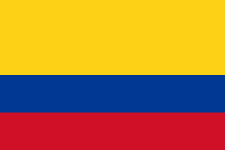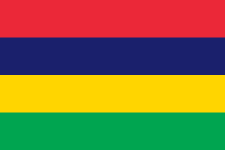- Industry
- Region
- Country / Region
On September 19, 2024, the Telecommunications Engineering Centre of India (TEC) issued a notice announcing the amendment to Article 5.4 of the Test and Certification Procedures v3.0 of MTCTE (TEC 93009:2024). The updated terms indicate that a combination of individual devices manufactured to form a system will not be certified under MTCTE, but rather that each individual device should be certified individually.
Click this link to view the original TEC notice.
On September 18, 2024, Colombia's National Spectrum Agency (ANE) launched a public consultation on very low power (VLP) and standard power (SP) for un-licensed outdoor applications in the 6 GHz band.
Click on this link to view the original public consultation. The comment period is until 9 October 2024.
On September 15, 2024, the Bangladesh Telecommunications Regulatory Commission (BTRC) issued a circular announcing the Commission's approval of the 6 GHz band for sharing of the 5925-6425 MHz band in cellular mobile networks for Wi-Fi, IoT, and WLAN devices. BTRC also stated that prior approval from the Commission is required before radio equipment can be imported and used before it can be provided commercially.
Click this link to view the original BTRC Circular.
On 9 September 2024, Saudi Arabia's Committee on Communications, Space and Technology (CST) began a public consultation on the spectrum outlook for commercial and innovative use for 2024-2027 and will open for comment until 7 October 2024.
Click on the this link to access the original public consultation.
On September 7, 2024, the Ministry of Internal Affairs and Communications (MIC) of Japan launched a public consultation on the draft Land Radiocommunication Commission report "Technical Requirements for Tire Pressure Monitors and Remote Keyless Entry in the 433MHz Band" in "Technical Requirements for the Development of Low-Power Radio Systems" and will be open for comments until October 7, 2024.
Click on this link to view the original MIC public consultation.
On September 6, 2024, the United States Federal Communications Commission (FCC) published a Proposed Rule Making Notice (NPRM) on the Federal Release website to facilitate investments in the 3550-3700 MHz band. The NPRM contains an overview of the federal protection regime implemented by the United States National Telecommunications and Information Administration (NTIA), the Department of Defense (DoD), and the FCC, and seeks comments on updates to technology and services rules. The NPRM updates the original definition of exclusion zone, giving the definition of dynamic protected areas (DPAs) and adjacent areas of dynamic protected areas, and clearly requiring that the spectrum management system (SAS) cannot authorize CBSDs to work in exclusion zones, dynamic protected areas and adjacent areas of dynamic protected areas.
Click this link to view the original announcement. Comments are open until 7 October 2024.
On 3 September 2024, Innovation, Science and Economic Development (ISED) of Canada officially released RSS-216 Issue 3, replacing RSS-216 Issue 2.
The main changes to the specification are as follows:
- The maximum separation distance for wireless power transfer (WPT) systems for electric vehicles has been increased from 10 cm to 50 cm, and from 10 cm to 20 cm for all other WPT equipment: Section 1(b)/(c);
- Increase the maximum operating frequency from 400 MHz to 40 GHz and increase the limit on radiated emissions above 1 GHz: Section 1 (d) and 5.3.3.3;
- Removed the condition (from Section 1) that requires additional instructions from ISED if the device is a medical device, and added specific requirements for WPT devices that can be implanted or worn on the human body: Section 5.2.2;
- Adoption of the ANSI C63.30-2021 standard with differences: Clauses 4.3, 5.2.1 and Appendix A;
- Clarification that RSS-216 must be used in conjunction with RSS-Gen and/or ICES-Gen: Paragraph 4.4;
- Clarifies the requirements applicable in the case of multiple supply voltages or a wide range of supply voltages: Section 5.1;
- Clarification of which devices are considered industrial, scientific and medical devices (ISM): Clause 5.3.1;
- Limit values are included directly in RSS-216 instead of quoting ICES-001: Clauses 5.3.2 and 5.3.3, and
- alternative limits are added based on RSS-210 under certain conditions: Clause 5.4;
- RF exposure requirements refer to RSS-102: No. 5.6;
Click on this link to view the original RSS-216 Issue 3 standard.
On 1 September 2024, the Kuwait Communications and Information Technology Authority (CITRA) issued Decision 2024/278. The decision announced that third-generation mobile communications (3G) services will cease operations in the country by June 1, 2025.
Click on this link to view the original CITRA decision.
On August 29, 2024, the United States Federal Communications Commission (FCC) adopted a report and order allowing drones to operate in the 5030-5091 MHz band. These new regulations will ensure the safe control of unmanned aerial vehicle systems (UAS) flights.
Click on this link to view the original text.
On 23 August 2024, the Information and Communications Technology Authority (ICTA) of Mauritius commenced a public consultation to provide additional spectrum for IMT (International Mobile Telecommunications). and will be open for comment until September 13, 2024.
Click this link to view specific advisory questions, frequency band planning suggestions, and more.







